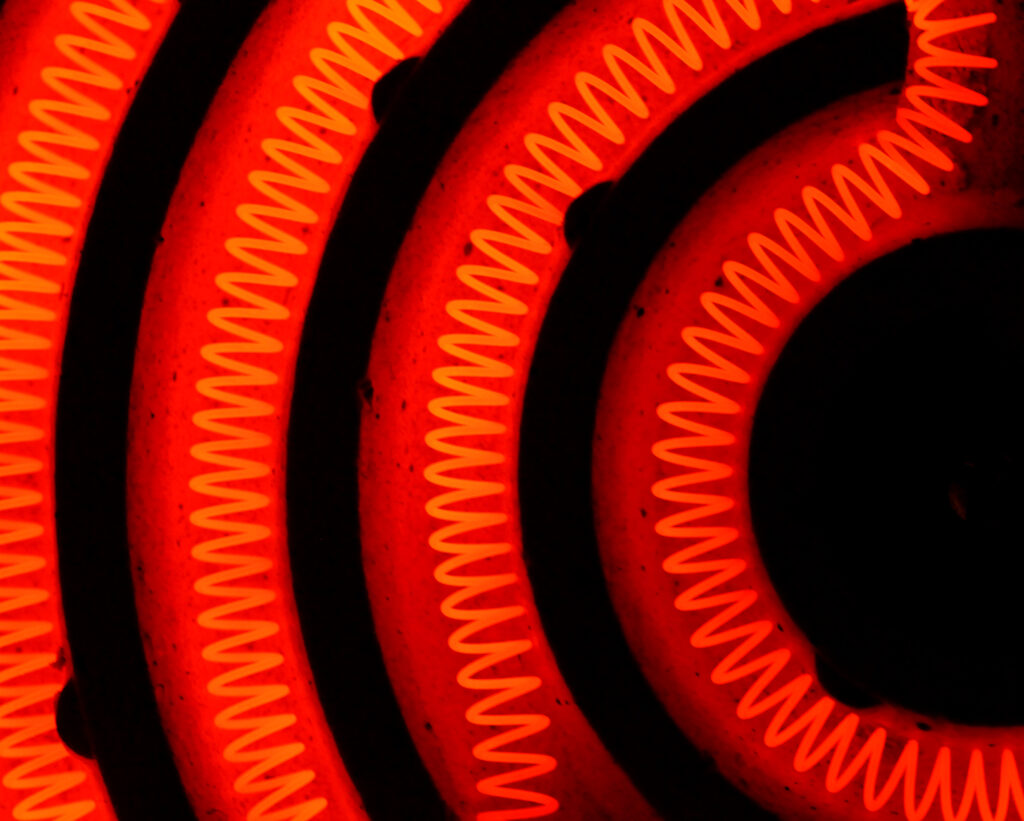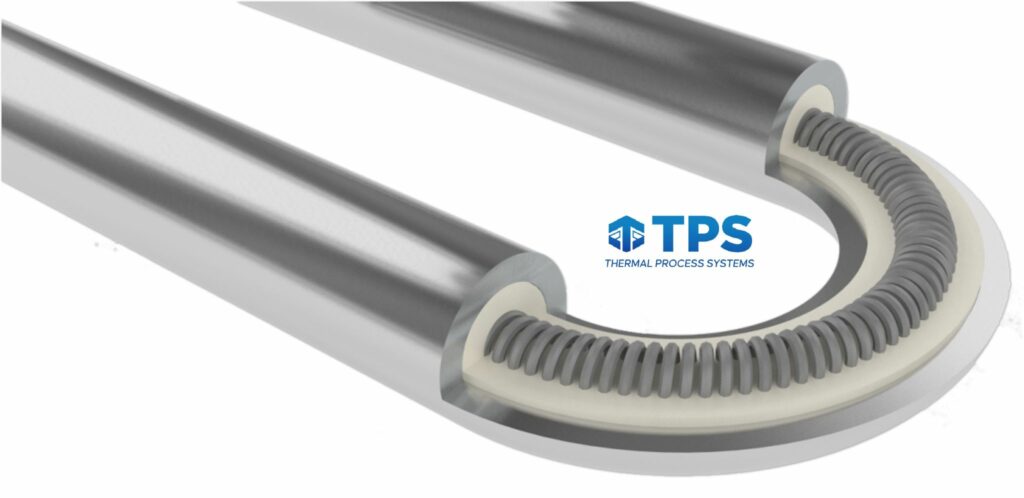Tubular Heating Elements
Take a look inside a tubular heating element...
Thermal Process Systems (TPS) provides a variety of heating solutions that can utilize electric flange, screw plug, and circulation heaters. Each unique for an its application, but they all have with one thing in commom.
Where does the heat come from? These heater designs incorporate tubular heating elements. The same type of elements found in a conventional kitchen oven. We weld these elements through a flange and then bussed into one of many types of housings. These housings are available with multiple certifications depending on customer’s needs.
There are a lot of considerations when designing a heater with tubular heating elements, but in this post, we’ll focus on the typical element construction and major components of the elements:

Internal Resistance Wire:
This wire is manufactured with a nichrome (80%Nickel/20% Chromium) coil, which is then positioned in the center of a metal tube sheath. Process conditions in terms of a watt/density (W/in2) dictate the wire design.
We design with different pitches, tightness and a unique variable density along a single tubular for specific circulation designs/flow applications. This attention to the watt density will help ensure a long-lasting heating element.
Tube Sheath:
The heating element sheath can be constructed of a variety of materials dependent on process conditions. Most applications utilize an alloy 800 or Stainless-Steel tube sheath material. We design the element sheath based on what the elements are being immersed or exposed to in the process and the temperature maximum of the process.
Customer’s applications can get hot! So, we weld some heaters through the flange using standoff tubes, which can be the same alloy as the flange. These torrid situations require that the housing need be further away from the flange face to minimize heat and meet housing certification requirements. If the wrong sheath and/or watt density is selected then the process can create a scenario for excessive coking or scaling that will cause the elements to fail prematurely.
Magnesium Oxide
Magnesium Oxide (MGO) is a fine granular powder material that insulates the Nichrome (NiCr) wire from the tube sheath. First, the MGO loosely fills the tubular sheath along with the internal resistance wire already positioned. Then we compact the MGO to form a solid layer that has both excellent thermal conductivity and dielectric strength. When a tubular element for a flange heater is formed the element is often bent into a ‘U’ Shaped. This bend has to be accounted for when filling the heater tube sheath; re-compaction and X-Ray conformity is a standard.

TPS is a custom heat solutions company specializing in complete thermal supply and expertise.
